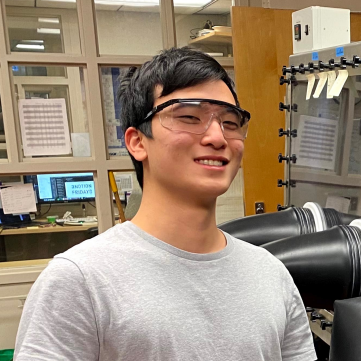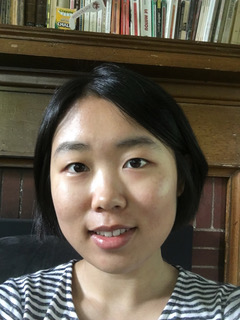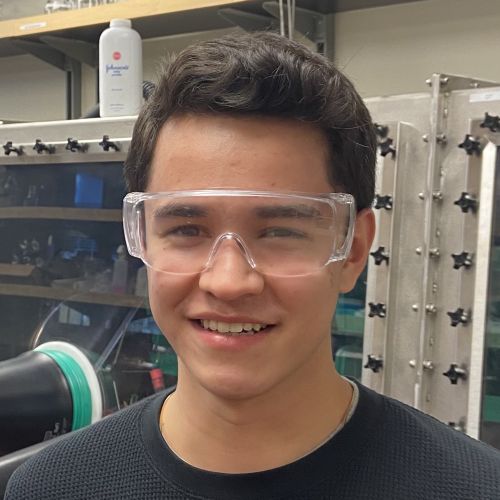Shuai Zhang
Research Assistant Professor, Materials Science & Engineering Email | Web Site CEI-related research interests: Shuai Zhang's research interests mainly focus on utilizing in-situ high-resolution and high-speed atomic force microscopy (AFM) and 3D Fast Force Mapping (3DFFM) to understand the structure, dynamics, and function of bio-macromolecular self-assembly at solid-liquid interfaces, inorganic minerals, clays and oxides, and further integrating these observations with simulation and deep learning (DL) to describe the corresponding models and adaptively control the synthetic outcomes. In addition, he is interested in how hydration water layer affects the structure, dynamics, and function of bio-macromolecule and how environmental stimuli modulate them. Third, Dr. Zhang is working on...
Juan-Carlos Idrobo
Idrobo is a material physicist, with expertise in experimental electron energy-loss spectroscopy (EELS), scanning transmission electron microscopy (STEM) and theoretical calculations based on density functional theory (DFT). He is interested in pushing the boundaries and applications of EELS in STEM to study materials at the atomic and nanometer scale. His research synergistically combines analytical electron microscopy with first-principles methods to reveal the structure-property relationships in a plethora of material physics problems, in particular the influence of point and extended defects on macroscopic properties. Email...
Tharindu W. Fernando
I will use computational and theoretical approaches to understand and predict topological effects of materials in their optically excited states. Currently, I am wrapping-up an investigation on a novel interband index T for 2D systems (such as transition metal dichalcogenides). We showed that T may provide gauge-invariant excitonic optical selection rules and help characterize valley topology in excited states. Next, I will develop robust DFT-based computational schemes to calculate T in other materials beyond tight-binding frameworks. I will simultaneously study T in non-Hermitian systems; which are realistic quantum systems with gain and loss due to interactions with optical fields and environments. I am interested...
Daniel Zhou
Thermoelectric materials, or materials that can convert waste heat into electricity are promising sources for renewable energy. For a thermoelectric material to be efficient, it must have low thermal conductivity and high electrical conductivity. Prime candidates for these materials are Zintl phases which are semiconductors that can exhibit metallic conductivity due to the contributions of ionic and covalent character. Both the cationic and anionic sites of these compounds can be manipulated to tune the electronic and thermal properties. The Velian group has developed redox-active nanoclusters that can be tuned electronically with the addition of different transition metals. I plan on linking these nanoclusters with inorganic...
Ying Xia
The focus of my research will be interface-assisted solution-synthesis of two-dimensional metal-porphyrin monoatomic layers (2D-PML), which are of great interest due to the tunability of their properties. I will use two methods to synthesize metal-porphyrin monoatomic layer structures, one is the hydrothermal method, the other is the water-oil interface assisted method. AFM will be the main characterization method to analyze nucleation and growth mechanisms during the synthesis procedure. Then clean energy applications such as catalysts for hydrogen evolution and electrical capacitance will be studied. Advisor: Jim De Yoreo and Jun Liu - Materials Science & Engineering...
Xingyi Wang
Semiconductor crystals that behave exactly as researchers expect are rare, if nonexistent in nature or in lab. Local environment within crystals like defects or surface discontinuities may dominate the properties of semiconductor materials, and often these intractable local impurities limit the performance of clean energy harvest or generation devices like solar cells or LEDs. As part of a collaboration, my project takes a step towards understanding photon generation and loss mechanisms bottom-up by isolating and directly observing single defects within ZnO nanoparticles at atomic level, and correlating their optical properties with theoretical calculations based upon the local environment of single defects. If the observed...
Eden Tzanetopoulos
Lighting accounts for 15% of annual global energy consumption. Due to mounting concerns arising from anthropogenic climate change, there is an increased demand for lighting technologies with higher efficiencies and greater longevity. My research will focus on synthesizing colloidal nanocrystals of Mn4+-doped A2MF6 (A = K, Na, Cs; M = Ti, Ge, Zr) lattices to be used as red-emitting phosphors. These activator-host materials can act as an efficient red component of white LEDs due to their narrow-band ~630 nm emission. Mn4+-doped fluorides have recently been utilized in next-generation lighting technologies, but the nanoscale regime that affords synthetic tunability and narrow emission bandwidth has yet to...
Kathleen Snook
Electrically conductive metal–organic frameworks (MOFs) are important due to their applications in electrocatalysis, energy storage, and electronic devices. However, their synthesis is often poorly developed, resulting in small crystal sizes and a limited understanding of their physical properties. I hypothesize that a critical barrier to their synthesis is uncontrolled ligand oxidation, as conductive MOFs often contain air-sensitive catechol, o-phenylenediamine, and dithiolene building units. During this award period, I will examine the synthesis of π–d conjugated 2D frameworks, an important family of conductive MOFs, via controlled chemical oxidation in an inert atmosphere. I will optimize my synthetic parameters using a design of experiments approach, in...
Ricardo Rivera-Maldonado
Electrocatalysis is a promising means to reduce the climate impacts of the chemical industry by combining renewable electricity, abundant feedstocks, and catalysts made of earth-abundant materials. The study of the surface of electrocatalytic materials is essential for the advancement of the field since all inner-sphere reactions occur at the surface and the surface modulates charge transfer and outer-sphere interactions with solvents, electrolytes, and substrates. Nanoscale catalysts enable these studies due to their high surface-to-bulk atom ratio. My research involves studying transition metal phosphide (TMP) nanoparticles. TMPs have been shown to be excellent catalysts for hydroprocessing and hydrogen evolution, which provide a foundation for developing...
Sebastian Krajewski
My research is centered on the synthesis and design of atomically defined nanoclusters that act as clean energy catalysts. The aim is to study the catalyst-support interface in catalytic systems by utilizing metal chalcogenide clusters that feature transition metal edge sites. This serves as a model for heterogeneous catalysts, which themselves are resistant to precise characterization and mechanistic elucidation. I will synthesize and study compounds that feature a cobalt selenide core with pendant organic ligands, aiming to construct a pocket on the surface of the cluster where transition metals may bind. Studying the behavior of earth-abundant metals such as iron and cobalt in this system via methods...
Ashlyn Kamin
Examples of electrically conductive metal–organic frameworks (MOFs) are rare, yet they show incredible promise for applications in electrocatalysis, advanced energy storage, and chemical sensing. My research focuses on combining the high conductivity, tunability, and porosity of these MOFs with the solution-processability of liquid crystals. To do this, we synthesize planar, π–d conjugated macrocycles that are equivalent to a single hexagonal pore in a conductive MOF. By simultaneously tuning the macrocycle’s core and periphery, we hope to stabilize liquid-crystalline phases that preserve the extremely high through-space conductivity (from π-π stacking) whilst introducing fluidity and stimuli-responsiveness. Advisor: Dianne Xiao - Chemistry...
Micaela Homer
Photocatalysis is valuable to clean energy research because it allows the storage of solar energy in stable, energy dense chemical bonds. Solution processability and ease of chemical modification make semiconductor nanostructures ideal candidates for applications in photoredox catalysis. The rate of charge transfer is an important benchmark in evaluating such a system. Spectroscopic measurements of charge transfer (picoseconds) are incommensurate with the timescale of typical photocatalytic reactions (minutes). Electrochemical experiments will be an attractive alternative for screening of photocatalytic systems when coupled with electrochemical modeling. Advisor: Brandi Cossairt - Chemistry...















